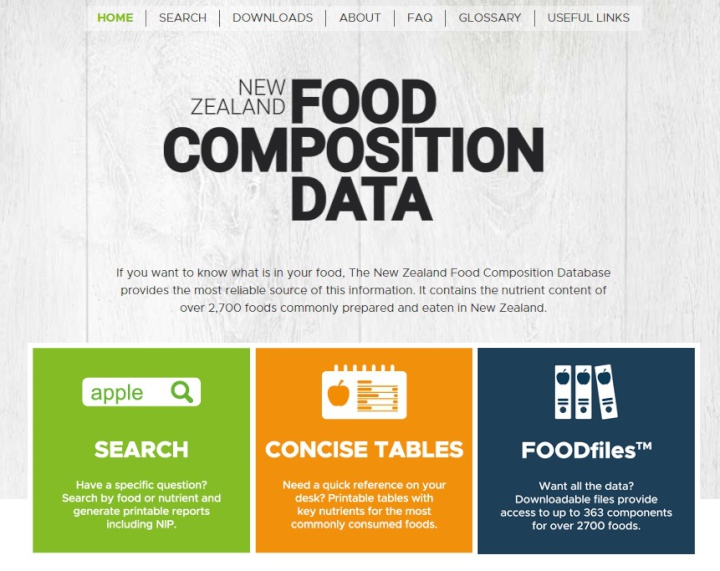How much sugar is really in our food?
4 July 2019

New data on free and added
sugars is included in the latest release of the New Zealand
Food Composition Database (NZFCD), jointly released by Plant
& Food Research and the Ministry of Health.
Given increasing public interest in the added sugar content of foods and drinks, and the influence that diets high in added sugar have on health and wellbeing, the new data will be invaluable for both health professionals and the general public wanting to know how much added and free sugar is really in their food.
“There are many foods with added sugars on our shelves, and many of them wear health halos – they’re marketed as being healthier than they really are,” says Niki Bezzant, food and nutrition writer and Editor-at-Large of Healthy Food Guide.
“Being able to see, and compare, exactly how much added sugar is in a food is really useful, because it’s the added sugar we really need to focus on if we’re trying to eat more healthily. I think this new sugar data will be a welcome resource for many New Zealanders.”
Reducing the intake of free sugars is widely recommended to help reduce diseases, such as diabetes, and for reducing dental caries. Free sugars include sugars extracted from sources such as sugar cane, coconut (coconut sugar) or corn (corn syrup) as well as sugars from sources like honey and fruit juice.
“Being able to find out how much sugar has been added during processing is really important in helping people make good food choices,” says Dr Carolyn Lister, Team Leader Food & Health Information at Plant & Food Research.
“The NZFCD is a great resource for people wanting to understand what is in their food. Now they can also find out how much sugar has been added to products.”
Estimating levels of added sugars can be challenging – particularly for those trying to adhere to health guidelines – as most national food composition databases do not include data on added and free sugars. The sugar data included in the latest version of NZFCD, developed in collaboration with the University of Otago, enables users to get a more direct estimate of added and free sugar contents than has been previously available.
The NZFCD is the most comprehensive collection of high-quality nutrient data for over 2700 foods commonly prepared and eaten in New Zealand.
In addition to the new data on added and free sugars, the publically accessible NZFCD contains information on 86 core nutrients and up to 277 other nutrients. Using the online search feature of the website users can look up single and multiple foods, find foods high or low in particular nutrients, or combinations of nutrients, and create simple or detailed reports.
Health and nutrition professionals and food manufacturers can search online or download the database to assess nutrient intakes, plan diets or assist with product formulation and food labelling and the general public can use it to make informed food choices.
Over 100 foods are added or updated each year and new products are released every two years. In 2018 a search tool was added to the website to make it easier for the user to find information.
The Database is managed and maintained by dedicated Plant & Food Research staff with the Ministry of Health being the major funder.
Website: www.foodcomposition.co.nz
ends


 NIWA: Ship Anchors May Cause Extensive And Long-lasting Damage To The Seafloor, According To New Research
NIWA: Ship Anchors May Cause Extensive And Long-lasting Damage To The Seafloor, According To New Research New Zealand Customs Service: A Step Forward For Simpler Trade Between New Zealand And Singapore
New Zealand Customs Service: A Step Forward For Simpler Trade Between New Zealand And Singapore Horizon Research: 68% Say Make Banks Offer Fraud Protection
Horizon Research: 68% Say Make Banks Offer Fraud Protection NZ Banking Association: Banks Seek Government Support For Anti-Scam Centre
NZ Banking Association: Banks Seek Government Support For Anti-Scam Centre National Road Carriers: Praises NZTA State Highway Investment Proposal Turnaround
National Road Carriers: Praises NZTA State Highway Investment Proposal Turnaround Greenpeace: Cameras Reveal Mass Underreporting Of Dolphin, Albatross And Fish Bycatch By Commercial Fishing Industry
Greenpeace: Cameras Reveal Mass Underreporting Of Dolphin, Albatross And Fish Bycatch By Commercial Fishing Industry



